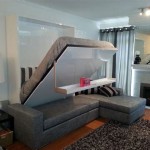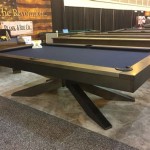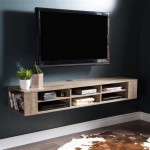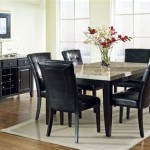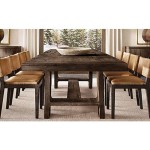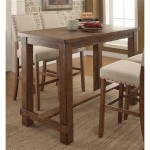Glass Cover For Dining Room Table: Protection and Aesthetics
A glass cover for a dining room table serves as a protective layer, safeguarding the table's surface from scratches, spills, heat damage, and other potential hazards. The use of glass covers is a common practice in households and commercial settings aiming to preserve the condition and appearance of their dining tables. This article explores the various aspects of glass covers for dining room tables, including their benefits, types, considerations when choosing one, and maintenance practices.
Dining tables often represent a significant investment, both financially and aesthetically. They serve as a focal point in the dining room, where families gather for meals and social interactions. Protecting this investment is crucial, and a glass cover provides a practical and visually appealing solution. The transparent nature of glass allows the beauty of the underlying table to shine through while offering a barrier against everyday wear and tear.
Benefits of Using a Glass Cover
The primary benefit of using a glass cover is protection. Dining tables are susceptible to various forms of damage, including scratches from utensils or decorative objects, stains from spilled food and drinks, and heat damage from hot plates or dishes. A glass cover acts as a shield, absorbing these impacts and preventing them from reaching the table's surface. This is particularly important for tables made of delicate materials such as wood, marble, or veneer.
Beyond protection, glass covers offer ease of cleaning. Spills and messes can be easily wiped clean from the smooth, non-porous surface of the glass. This eliminates the need for intensive cleaning or specialized cleaning products that might be required for the table's original surface. Regular wiping with a damp cloth and a mild cleaning solution is usually sufficient to maintain the cleanliness of the glass cover.
Another advantage is the enhancement of the table's aesthetic appeal. A well-chosen glass cover can complement the design of the dining table, adding a touch of elegance and sophistication. Clear glass covers allow the table's natural beauty to be fully visible, while tinted or frosted glass can create a different visual effect, depending on the desired style. Furthermore, a glass cover can help to smooth out the appearance of an older table, concealing minor imperfections and giving it a renewed look.
The durability of glass also contributes to its suitability as a table cover. Tempered glass, in particular, is highly resistant to impact and heat, making it a long-lasting and reliable protective layer. With proper care, a glass cover can provide years of service, protecting the dining table and preserving its value.
Types of Glass Covers
Several types of glass covers are available for dining room tables, each with its own characteristics and advantages. The most common types include clear glass, tempered glass, frosted glass, and tinted glass.
Clear glass is the most popular choice for dining table covers because it offers maximum transparency, allowing the table's original design and finish to be fully visible. It provides a neutral and unobtrusive protective layer that blends seamlessly with any décor.
Tempered glass is a type of safety glass that is heat-treated to increase its strength and durability. It is significantly more resistant to impact and heat than regular glass, making it an ideal choice for dining tables where hot dishes are frequently placed. If tempered glass breaks, it shatters into small, blunt fragments, reducing the risk of injury.
Frosted glass has a textured surface that obscures the view of the table underneath. It provides a degree of privacy and can be used to conceal imperfections or create a more subtle and diffused look. Frosted glass is often used in contemporary or minimalist dining rooms.
Tinted glass is available in a variety of colors, such as gray, bronze, or black. It can be used to add a touch of color and personality to the dining room. Tinted glass can also help to reduce glare and create a more subdued atmosphere. The choice of tint should be carefully considered to ensure that it complements the overall décor of the room.
The thickness of the glass is also an important consideration. Thicker glass is generally more durable and resistant to breaking, but it can also be more expensive. A thickness of ¼ inch (6mm) is generally considered sufficient for most dining table applications, but thicker glass may be preferred for larger or more heavily used tables.
Considerations When Choosing a Glass Cover
Choosing the right glass cover for a dining room table involves several considerations, including the size and shape of the table, the type of glass, the thickness of the glass, and the desired aesthetic appearance. It is crucial to accurately measure the table's dimensions to ensure that the glass cover fits properly.
The shape of the glass cover should match the shape of the table. Common shapes include rectangular, square, round, and oval. Custom shapes can also be created to fit unusual or irregularly shaped tables. A slightly larger glass cover is preferable to one that is too small, as it provides better protection for the table's edges.
The type of glass should be chosen based on the level of protection desired and the aesthetic preferences of the homeowner. Tempered glass is generally recommended for its durability and safety, but clear glass is often preferred for its transparency. Frosted or tinted glass can be used to create a different visual effect.
The thickness of the glass should be appropriate for the size and use of the table. Thicker glass is more durable but also more expensive. A thickness of ¼ inch (6mm) is generally sufficient for most dining table applications, but thicker glass may be preferred for larger or more heavily used tables.
The edges of the glass cover should be finished to prevent chipping and to ensure safety. Common edge finishes include polished edges, beveled edges, and mitered edges. Polished edges are smooth and rounded, while beveled edges are angled. Mitered edges are used to create a seamless look where two pieces of glass meet at a corner. The choice of edge finish depends on the desired aesthetic appearance and the overall style of the dining room.
The cost of the glass cover is also an important consideration. Glass covers can range in price from relatively inexpensive to quite expensive, depending on the size, type of glass, thickness, and edge finish. It is important to compare prices from different suppliers and to choose a glass cover that offers the best value for the money.
It is also important to consider the potential for condensation to form between the glass cover and the table's surface. This can be a problem in humid environments or when hot dishes are placed on the table. To prevent condensation, it is recommended to use small, clear bumpers or spacers to create a slight gap between the glass cover and the table's surface. These bumpers allow air to circulate and prevent the formation of moisture.
When selecting a vendor for a glass table cover, it's important to choose a reputable supplier with experience in cutting and finishing glass. A professional supplier can provide accurate measurements, high-quality materials, and expert installation. It's also wise to review the supplier's warranty and return policy to ensure satisfaction with the purchase.
Maintaining a Glass Cover
Proper maintenance is essential to keep a glass cover looking its best and to prolong its lifespan. Regular cleaning is necessary to remove dust, fingerprints, and spills. A simple solution of warm water and mild dish soap is usually sufficient to clean the glass cover. Avoid using abrasive cleaners or scouring pads, as these can scratch the surface of the glass.
To clean the glass cover, simply spray the surface with the cleaning solution and wipe it down with a soft, lint-free cloth. Dry the glass thoroughly to prevent streaks. For stubborn stains or spots, a glass cleaner can be used. Follow the manufacturer's instructions carefully and avoid using excessive amounts of cleaner.
It is also important to protect the edges of the glass cover from chipping. Avoid bumping the edges against hard surfaces. If the edges become chipped or damaged, they can be repaired by a professional glass repair service.
Regularly check the bumpers or spacers that are used to prevent condensation. Make sure that they are still in place and that they are not damaged. Replace any damaged bumpers as needed.
Avoid placing extremely hot items directly on the glass cover. While tempered glass is resistant to heat, extreme temperatures can still cause it to crack or shatter. Use trivets or hot pads to protect the glass from heat damage.
In addition to regular cleaning, periodically inspect the glass cover for any signs of damage, such as scratches, chips, or cracks. Address any damage promptly to prevent it from worsening. Small scratches can sometimes be buffed out with a glass polishing compound, but larger scratches or cracks may require professional repair or replacement.

Custom Glass Table Tops Made To Your Vision Palace Of

How To Cover A Glass Tabletop Easy Steps Flowyline Design

Custom Glass Dining Table Top Cut To Size A E Glazing

Sligo Glass Tabletop Toughened Polished 6mm 8mm

Glass On Top Of Wood Table How To Protect With

Custom Glass Dining Table Top Cut To Size A E Glazing

Glass Rectangular Transparent Dining Table Cover 6 Seater Size 54 At Rs 300 Piece In New Delhi

Glass Table Tops Tables Direct

Glass Table Cover Coffee Dining Desk Side Protection

Benefits Of A Glass Table Top New Concepts Design

